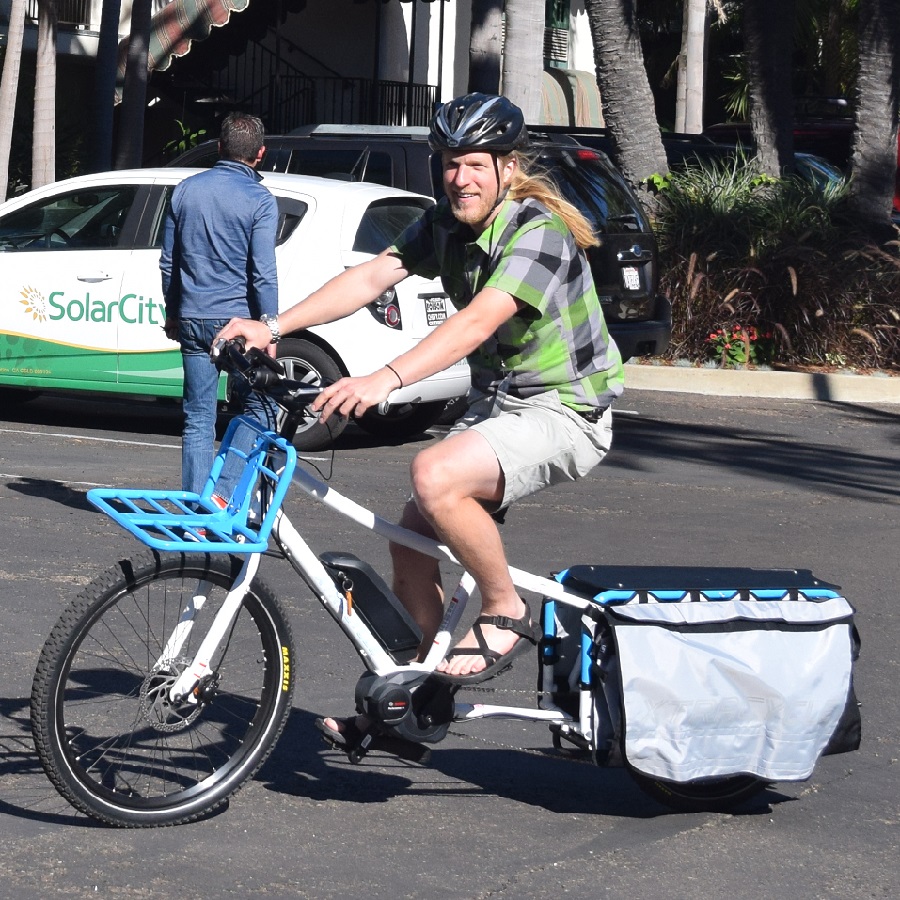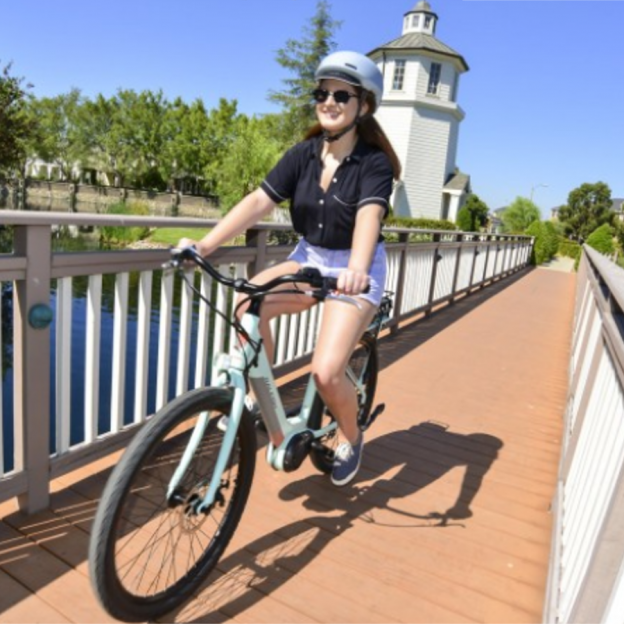by John Brown, HaveFunBiking.com
The idea of strapping a motor to a bicycle is nothing new. In fact, the first internal combustion engine bicycle was launched in 1885. As the bicycle industry moved forward into the next century, bikes with motors became motorcycles. But, the call for some sort of bicycle, powered by a motor, has never faded away. In recent years bicycles called E-bikes or electric-assist bikes have emerged to fill that void. Now as battery technology matures there are many options you can choose from when looking to buy an electric bike. Read on for some tips on choosing the right E-bike for you.
Motor options for E-bikes
At the heart of any E-bike is its motor. Motors usually break down into two types; Hub motors and Center motors.
Hub motor systems
These options replace either the front or rear hub with an electric motor. The front motor systems are usually an aftermarket system designed to change a standard bicycle into an electric bike. While these systems aren’t used commonly on stock E-bikes, they are another option if you have a bike you love and want to add some battery power. Rear motor systems replace the rear hub with a motor. Additionally, some rear hub systems incorporate the motor and battery into the rear wheel. Some of the benefits of a hub motor system are that they don’t put any additional strain on the chain or gears of a bicycle. The cost might also be a factor.

The Center motor systems
This has become the most popular option for a completed E-bikes in today’s market. A center motor bicycle is purposely built to accept a motor in the center of the frame where a normal bikes pedal crank would go. With two major E-motor manufacturers, either Bosch or Shimano, most bicycle brands build their bikes around one of these two systems. Center motors are usually about 50% more efficient than hub motors and produce more torque. This allows the center motor to have a better range and ride quality. Also, when removing a wheel for transport or fixing a flat, a center motor system is far easier than a hub motor.

The battery for an E-Bike
E-bikes usually use a battery located in one of two places, over the rear wheel or on/in the frame’s downtube. The batteries use a series of Lithium-ion cells to maximize motor power while keeping the system light. When comparing batteries, the power is measured in Watt Hours, with larger batteries having more Watt-Hours, equaling a longer mileage range.

How the E-bikes works
Most E-bikes come equipped with pedal assist for added power when pedaling. However, there are few models that also offer a thumb or twist throttle for an added boost when you need it. With only the pedal-assist made most E-bikes only offer power when you need it. Therefore, if you are riding along a flat path or downhill, the E-bike will not offer much in the way of assistance. However, if you are riding against a headwind, along rolling terrain, or uphill, the E-bike’s motor will kick in and assist you when the going gets tough. Additionally, most systems are adjustable, allowing you to customize the level of assistance you may need.

Range between charges
Determining the range of an E-bike is difficult due to the fact that the motor only engages when needed. As an example, someone riding a bike on a 45-mile trip that is half downhill and the other half on flat ground might finish their ride with plenty of battery left. On the other hand, a route selected that is 15 miles long but full of steep hills could burn through a fully charged battery sooner. So the published information for any E-bikes range is a bit of a guess. On the bright side, these guesses are consistent across most brands, so the range is still a good way to compare brands.
Buying an E-bike
The best place to start your E-bike buying education is at your favorite bike shop. Usually, I recommend doing some research about various brands before starting a search, but with E-bikes, the ride is more important than the stats. For E-bikes more than any other bike, the sum is greater than the parts, so ride the bikes! In fact, ride as many of the bikes as you can. They will all have drastically different ride qualities. Beyond the different ride qualities, there are also many different types of E-bikes. Those types can include Mountain bikes, Fat bikes, Road bikes, Trekking bikes, as well as trikes and recumbents.
Accessibility for E-bikes

The last thing to consider when buying an E-bike is your state’s laws on the subject. Will they legally allow you on non-motorized trails or road, or treat you as a motor scooter, requiring a license? Considering E-bikes are a relatively new development, the department of transportation in individual states haven’t all agreed on how to treat them. Additionally, your local trails could be off-limits to your new E-bike, so check the laws first. As the E-bike legislation matures, I think there will be more and more options for E-bike riding all states.


